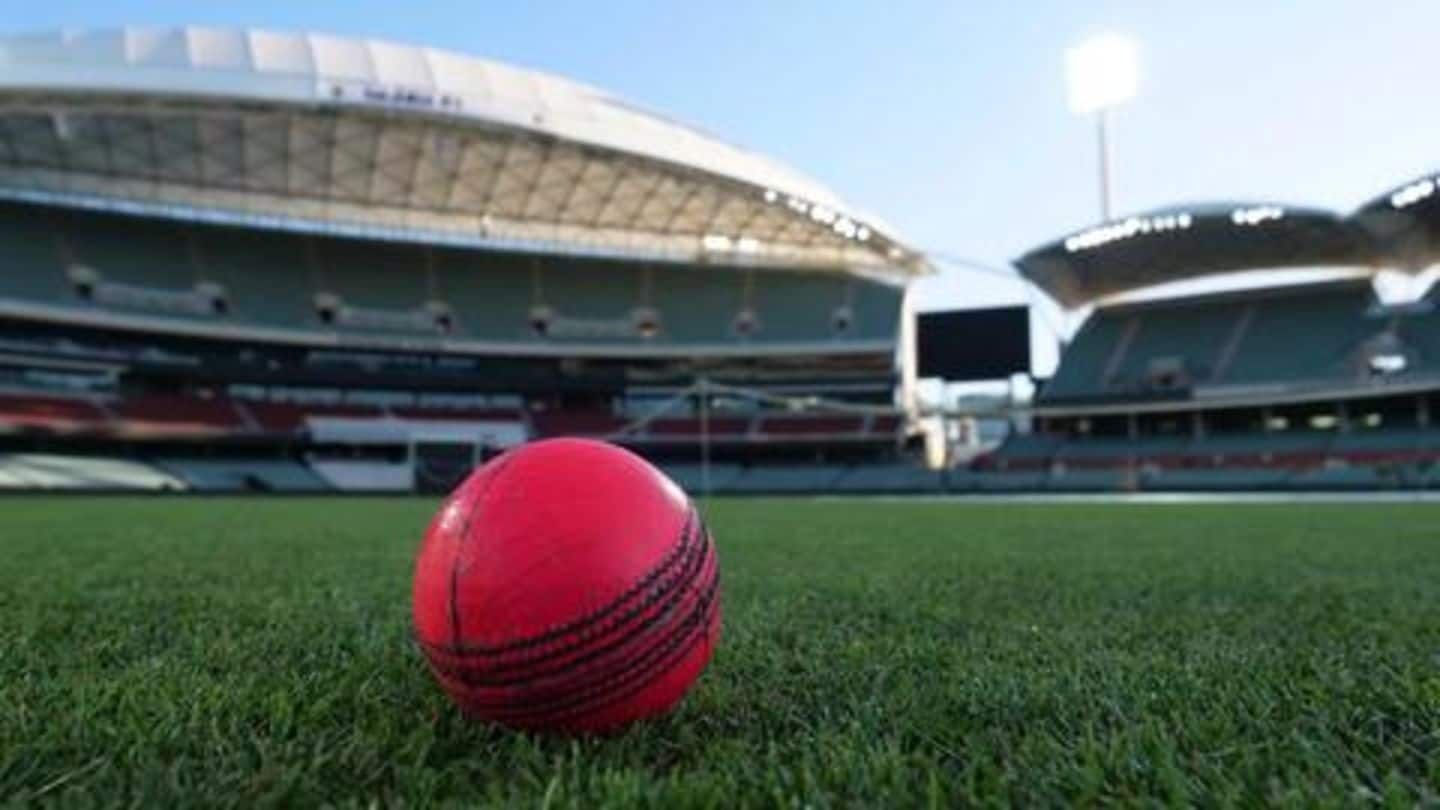
#NewsBytesExplainer: Decoding the dynamics of Day-Night Tests
What's the story
Day-Night Tests, often known as pink-ball Tests, have catapulted the longest format of the sport to an altogether different space. Although it is still not a regular affair, quite a few nations have been successful with this experiment. With the broadcasters struggling to get viewership in Tests, the Day-Night matches serve as a catalyst. Let us understand the dynamics of the pink-ball Tests.
Difference
Pink-ball Test is played with floodlights on
As compared to a conventional Test match, the latter part of a Day-Night Test is played under lights. It commences late in the day around (1 PM), followed by lunch and tea. The final session of the day is played under floodlights, which brings a stern challenge to the batsmen. Notably, a pink ball is used instead of the regular red ball.
Pink ball
Why is pink ball used in Day-Night Tests?
The color pink was chosen for the ball as the other bright colors (yellow and orange) tend to merge with the brownish patches on the pitch. Hence, a pink ball sparkles more under the lights, making it easy for the players to spot. Earlier, there were suggestions to try a white ball in Day-Night Tests. However, pink balls deteriorate slowly than a white one.
Shine
Why does a pink ball shine more?
A classic red ball is dipped in grease to get rid of the water content. Paradoxically, the pink ball gets a pigment finish since applying grease to it would sombre the fluorescent pink. This will affect its visibility to a great extent. The ball is then sprayed with a thick coat of pink color, so that it lasts longer.
Dynamics
Bowlers fetch more swing in the initial overs
It is believed that a pink ball carries 20% more swing than a red ball, however, it disappears as the ball gets softer with time. Since the pink ball ages at a slower pace, it leaves little margin for bowlers to make it reverse later on. The ball-makers believe roughing up one side of the ball gets difficult after the twilight period.
Twilight period
Batsmen usually struggle during the twilight period
A twilight period is that time of the evening when the sun is about to set and the floodlights are on. Bowlers generally look to make inroads because the batsmen get vulnerable during this period. Dealing with the ball amid both sunlight and artificial light is always a task for the batsmen. Also, the ball swings more here, owing to the rising moisture content.
History
The aim was to expand the viewership
In the late 2000s, lack of viewership marred Test cricket big-time. This gave rise to the concept of the Day-Night Test, which grabbed eyeballs immediately. With the timings shaped according to the schedule of masses, the idea was to attract more spectators to the ground and also grow the TV audience. It allowed people to watch the match in the evening session, after work.
Tests
Australia hosted the first ever Day-Night Test
The first-ever Day-Night Test saw Australia taking on New Zealand in Adelaide in November 2015. It turned out be a low-scoring thriller with neither team reaching the 250-mark even once. As many as 14 Day-Night Tests have been played as of now. India became the latest nation to feature in Day-Night cricket when they hosted Bangladesh at the Eden Gardens in 2019.